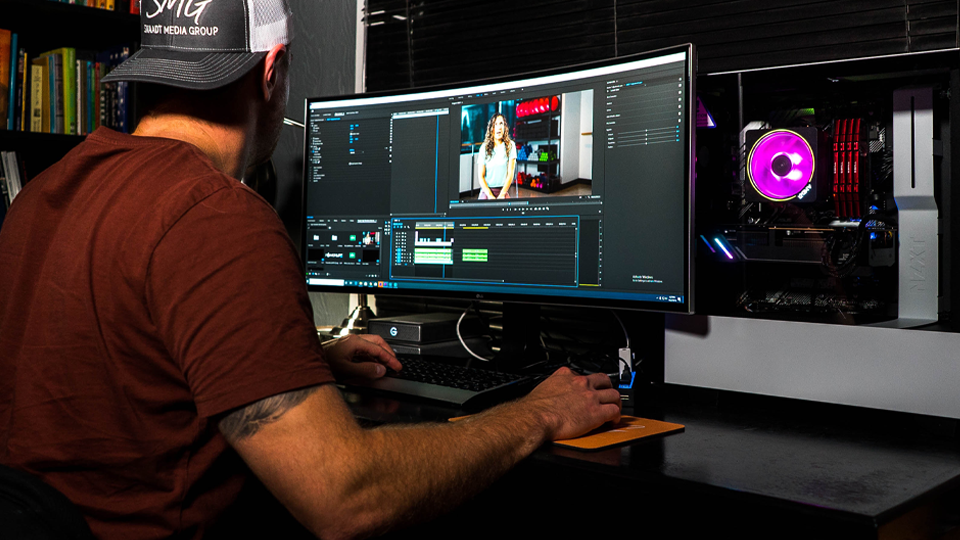10 must-know photographers who capture the cinematic side of life

Samuel Taggart

8 Minutes

Find inspiration in these still images that resemble movie freeze frames.
Great filmmakers, directors, video editors and cinematographers—they think in frames, considering the way the camera moves through the set. They closely examine the foreground and background of a shot; the scenery that paints the horizon and the objects in the scene that work to tell the story in an inanimate way. It takes a keen eye to fabricate a believable reality (or at least a compelling one) on-screen, and every single cinematic detail—the lighting, the costumes, the environment—that lives within the frame is the result of this premediation.
In photography, the frame can be equally cinematic and emotionally evocative. Street photographers procure their imagery from reality itself. Others in the contemporary scene, coined “cinematic photographers,” create sets in a studio (or out in the world) and generally style their images—whether during the shot with costumes, lights, makeup or other effects, or later in post-production editing—in a process more akin to that seen in cinema.
Here, we’ve distilled a list of the finest photographers, new and old, who showcase a cinematic style. How each photographer takes their photos follows a different process but each achieves the same end result—telling a story in a single frame. Where movies have thousands (if not millions) of frames through which to tell a story, photography is limited to just one; what reveals itself to the viewer is what appears in-frame and the rest is left to the audience. The photographers featured in this article will make you reconsider what it means to think cinematically and renew your appreciation of the relationship between these two artforms.
“By arresting motion, photography turned into the scalpel which temporal reality could be dissected. Cinema, the Dr. Frankenstein of the Arts, takes the resulting slices and restores them into something resembling reality.” — Philip Proger
Richard Tuschman
Stemming from a lifetime of fine art photography, Richard Tuschman is now sharing his intimate knowledge of how to craft cinematic images. “The Staged Poetic Image” is a course taught by Tuschman through the Los Angeles Center for Photography; in it, photographers learn about the importance of constructing imagery with compelling, lingering emotion. His series of works, including Hopper Meditations, My Childhood Reassembled and Once Upon A Time in Kazimierz, feature these same tactics at play, “open-ended photographic narratives that explore the complexities and emotional nuances of human relationships,” as it states on the artist’s website. Portraying the deep, unspoken nature of humanity by combining photography, collage and digital editing techniques, Tuschman manufactures his dreamlike, photographic montages to be grounded in the human condition yet simultaneously removed from any true reality.
Gregory Crewdson
Renowned for a contemporary style that walks the line between photographic and cinematic efforts, Gregory Crewdson’s imagery imparts a world of fiction into an artform that is often rooted in capturing reality in its truest form. In his large-scale endeavors, Crewdson focuses on small town America and infuses his scenes with human figures, each with a story to be interpreted by the viewer. He often employs many assistants, lighting technicians and others usually reserved for film sets to bring his concepts to life with painstaking precision. The results are photographs that feel familiar and far-off in the same instance, a peculiar reflection of reality that lingers long after you’ve stepped away from the image itself.
Liam Wong
Liam Wong embodies a futuristic, neon-noir photographic vision. Taking inspiration from his profession as a videogame designer—he was the youngest-ever Art Director to oversee Ubisoft, one of the largest gaming companies in the world—his photos capture mainly urban environments tinged with expressive neons and bustling cityscapes. Rather than create his own scenes from scratch, Wong relies on the electric atmosphere of real places (like Tokyo for his inaugural photobook, TO:KY:OO) to set the stage, then later develops into glowing reproductions of real life through post production. Wong’s work immerses its audience in a world where the lights shine a little brighter on storefronts and signs, the characters in the frame seem removed from reality and the atmosphere of the place feels more present… more cinematic.
Simon Aslund
Swedish photographer Simon Aslund is a master of atmosphere. His work is visually thematic—often an ambiguous figure standing amidst a foggy, dimly luminous environment—and it transfixes its audience through the use of light and shadow. While a story can’t often be interpreted about the shadowy figures in these images, that isn’t their purpose: Let the dreamlike essence of these photographs bring you to a place of wonder, where maybe you, too, have been walking through a city at night admiring the glow of the street lights as you head somewhere new.
Chloe Meynier
Chloe Meynier’s self-portraits and continuing body of work are a beautiful, pensive portal into female gender roles and societal norms of the 20th Century. Her themed series, including Made In The Shade, Wait Until Dark, Abandoned Dreams and others chronicle the perspective of women from the 1950s through the current day, leaning on the French-born artist’s own experiences to ruminate on the bigger themes of gender identity through the years. On the surface, Meynier’s photography showcases a time capsule of Americana design through stunning recreations of domestic spaces in Mid-century Modern styling—but apart from the surface-level nostalgia of these spaces, the characters that inhabit these photographs (often the artist herself) provide the deeper commentary and impression that lingers like a movie.
Oli Kellett
Oli Kellet’s street-focused imagery blends the classic composition of snap-as-you-go photographers like Henri Cartier-Bresson and Guiseppe Milo with the emotive thoughtfulness of cinematic styles more popular in contemporary circles. In his collection Cross Road Blues, specifically, this tendency shines: There’s an immediate sense of someone (or a group of people) playing the “leading role” in the photo; these figures stand out from the rest of the bustling urban scenery with pointed clarity. Through this recurring theme, Kellett brings a sense of identity to these otherwise anonymous cityscapes, urging the audience to empathize with each focal character and read further into their ambiguity; only then does the audience begin to bring their own impressions of the world to the photo, further establishing its meaning.
Arnaud Montagard
Leafing through Arnaurd Montagard’s photography collection will leave you with dreams of the United States caught in another time—Kerouac’s ‘50s, a golden age of diners, Coca-Cola and the shimmering American Dream. These images evoke feelings of Wes Anderson movie sets or maybe Edward Hopper paintings if they were recreated in real life, full of bold colors, strong light and a sense of nostalgia. These scenes are part of the world as Montagard sees it; moments from reality that, when snapped through the right lens at the right moment, take the viewer beyond the surface and into their imagination, where the soda on the counter becomes less of an object in a photograph and more of a catalyst to considering your own life experience.
Henri Prestes
Explore the photography of Henri Prestes and immerse yourself in an otherworldly vision of the Portuguese countryside and its surrounding villages. Impressions of solitude and mysteriousness flow through Prestes’ work, which often features misty, eerie scenes shrouded in a tangible, almost heavy-looking atmosphere. But these final prints are the result of a tedious editing process—the actual photo that Presetes takes in the field is just the beginning of the image’s life cycle. Prestes then takes inspiration from his experience as a commercial filmmaker and leans heavily on editing and color-correction to manipulate his photographs into their final form, a combination of still imagery and impressionistic editing that lingers on the viewer’s eye.
William Eggleston
William Eggleston’s images of real-life scenes seem as though they could be frozen from a movie, thanks to their refined composition and use of color. The Tennessee-born photographer has been credited with popularizing color street photography. Breaking away from black-and-white film—considered the pinnacle of the artform during Eggleston’s most prolific shooting days—he instead focused on colorizing the photographic experience, painting his images with the splashes of color that fill our everyday lives. Through his tenured lens that sits at-the-ready to capture the fleeting moments of life, Eggleston makes the ordinary seem extraordinary with the simple power of his framing. His subject matter—a ceiling fan, a passerby on the street, an ice cream cone—encourages viewers to think beyond the image and reminisce on a 20th century America and the society that surrounds it.
Cindy Sherman
American photographer Cindy Sherman took the combination of photography and cinema to the new heights in her classic series of images from the 1970s, coined Untitled Film Stills. In the project, Sherman places herself in front of the camera, often dressed in a Audrey Hepburn-style, in a variety of fabricated scenes designed to look like stills from movie sets you’d see in Hitchcock movies and others of that era—but none of the “scenes” captured by Sherman are from movies actually exist. Rather, she acts as her own main character—the narrator of a story that the viewer is left to create—urging the audience to explore their preconceptions about the relationship between photography and cinema. Inherently, we’re left to ponder… If these movies were to exist, what would be the plot? Who is the main character? And what does the individual frame captured by Sherman reveal about it all?



































